ALL ABOUT DETONATION, PRE-IGNITION AND BACKFIRING

RELEVANT DISCUSSION:
FAA-H-8083-25, 8083-30, 8083- 31, 8083-32, AC 33.28-2, AC 33.28-3, AC 33.47-1, AC 65-12, AC 91-33, FAA-P-8740-35
Not so many years ago, before computers got involved, automobile engines ran using all sorts of ancient technology that made them prone to detonation and/or pre-ignition when the timing and fuel mixture got out of whack. These symptoms, usually called “engine knock,” were quite common and relatively easy to detect at automobile speeds, but not so easy to detect at airplane speeds and noise levels. Of course, the majority of the general aviation fleet still relies on some of that same ancient technology and even throws in some parts from a farm tractor (magnetos). Here’s a primer on how these conditions relate to aircraft engines.
NORMAL COMBUSTION: Occurs when the fuel/air mixture ignites in the cylinder and burns progressively at a fairly uniform rate across the combustion chamber. When ignition is properly timed, maximum pressure is built up just after the piston has passed top dead center at the end of the compression stroke. The flame fronts start at each spark plug and burn in more or less wavelike forms. The velocity of the flame travel is influenced by the type of fuel, the ratio of the fuel/air mixture and the pressure and temperature of the fuel mixture.
Esta historia es de la edición December 2017 de Flying.
Comience su prueba gratuita de Magzter GOLD de 7 días para acceder a miles de historias premium seleccionadas y a más de 9,000 revistas y periódicos.
Ya eres suscriptor ? Conectar
Esta historia es de la edición December 2017 de Flying.
Comience su prueba gratuita de Magzter GOLD de 7 días para acceder a miles de historias premium seleccionadas y a más de 9,000 revistas y periódicos.
Ya eres suscriptor? Conectar
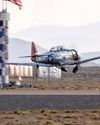
The Temple of Speed
Reno entices even this altitude-oriented pilot.

Flat Sixes
Fanatical artisans
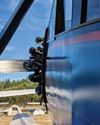
Blue over Green, Tent in Between
I’m old , I’m cranky. Why do I keep air-camping?
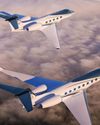
Gulfstream Reveals G400, G800
The product lineup gains large-cabin and ultralong-range mounts.
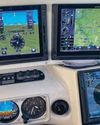
Every Airplane Requires a Checkout
Embrace the challenge of mastering a new machine.

Fuhggedaboutit
Fifty-plus years of f lying forgetfulness
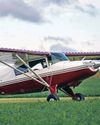
THE MAULE FAMILY APPROACHABLE AIRCRAFT
Choose your mount —the Maules do it all.

Sisters
“ Women certainly have the courage and tenacity required for long flights.” —Mildred Doran
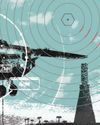
INSIDE OUT OR OUTSIDE IN?
What kind of pilot should you be?
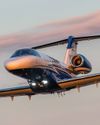
WE FLY: CESSNA CITATION CJ4 GEN2
THE FLAGSHIP CJ JUST GOT A WHOLE LOT BETTER.